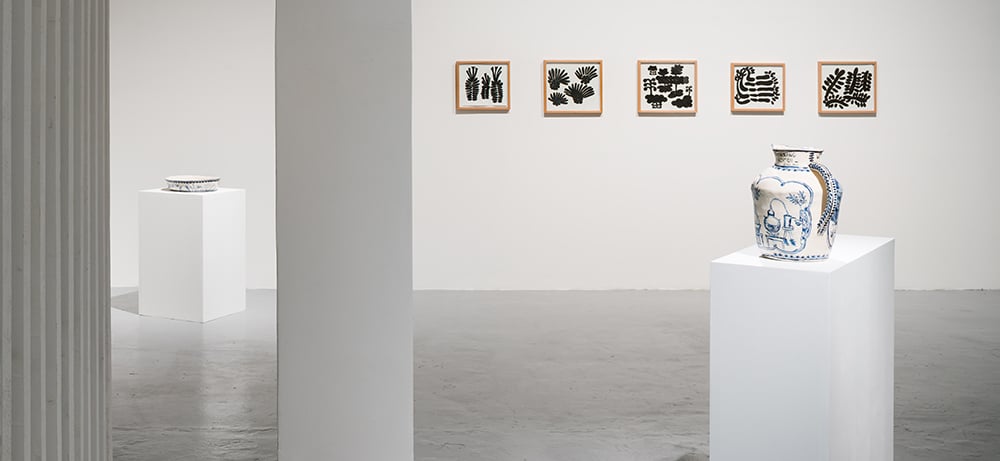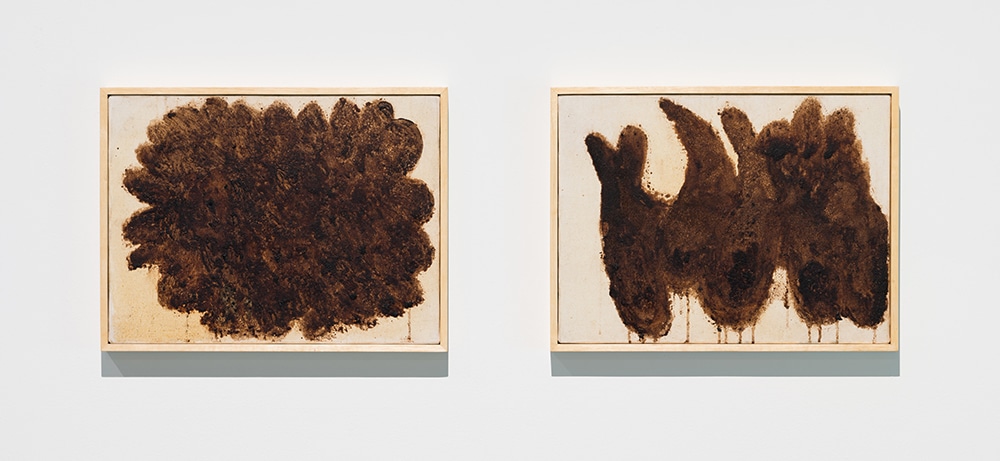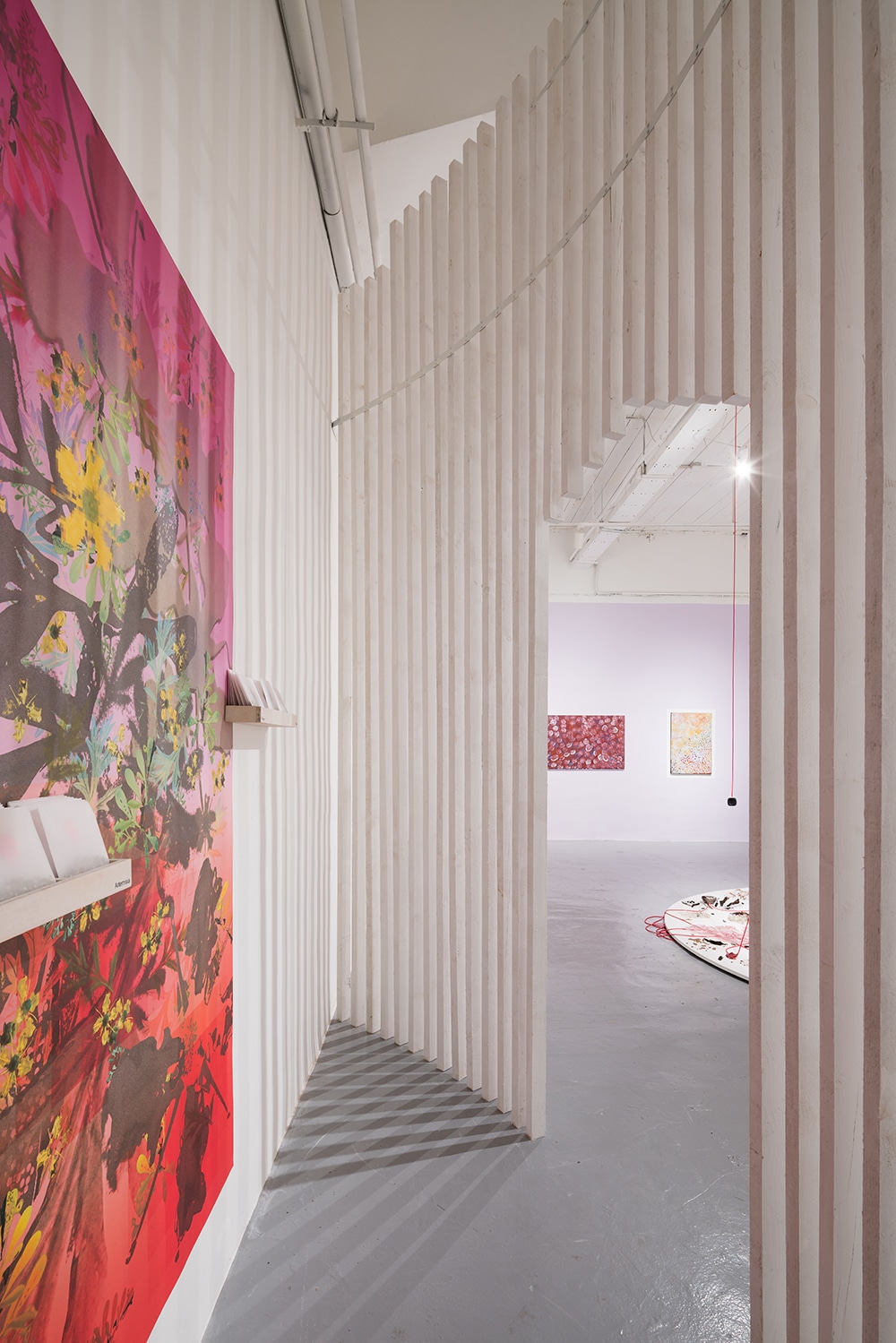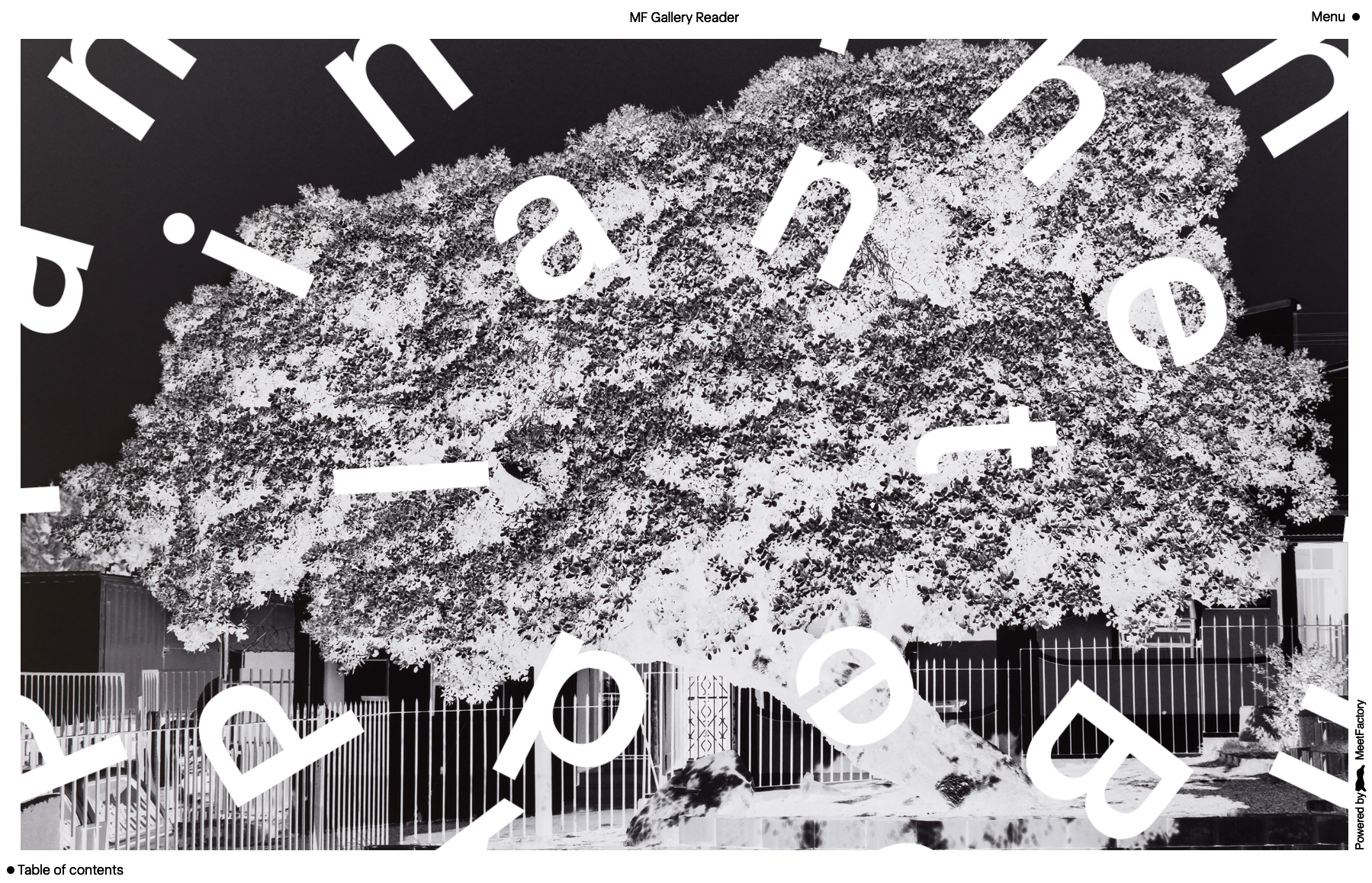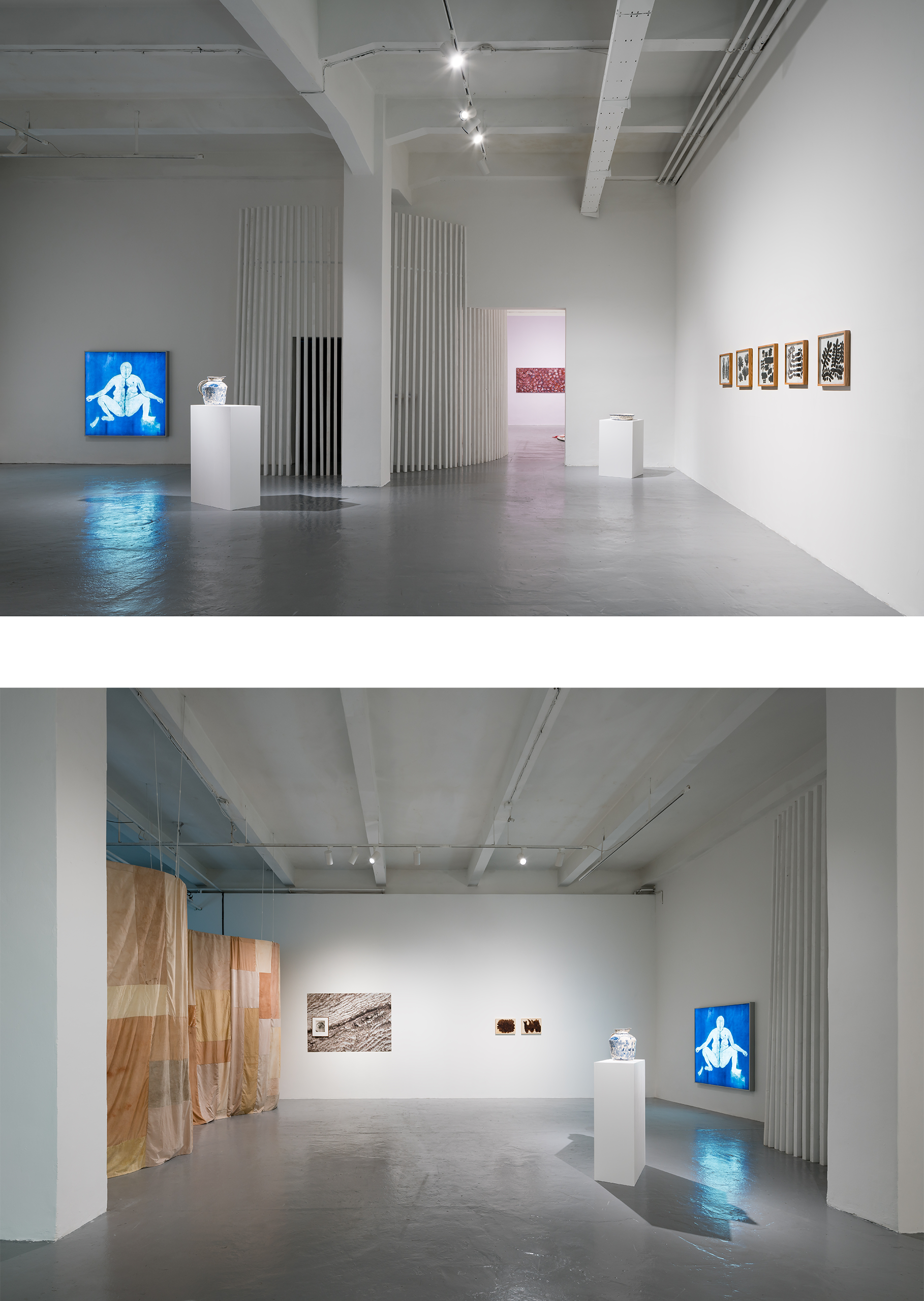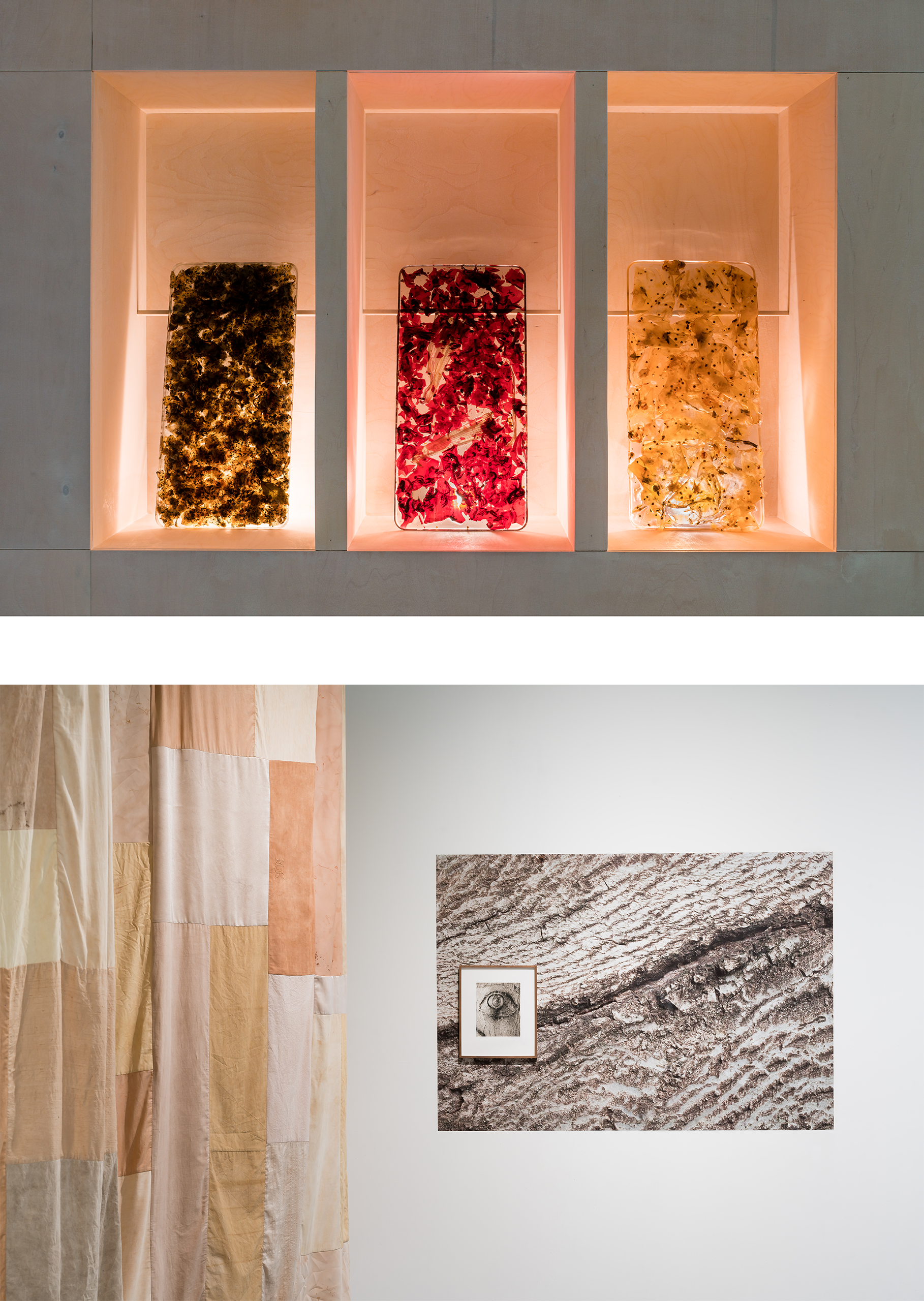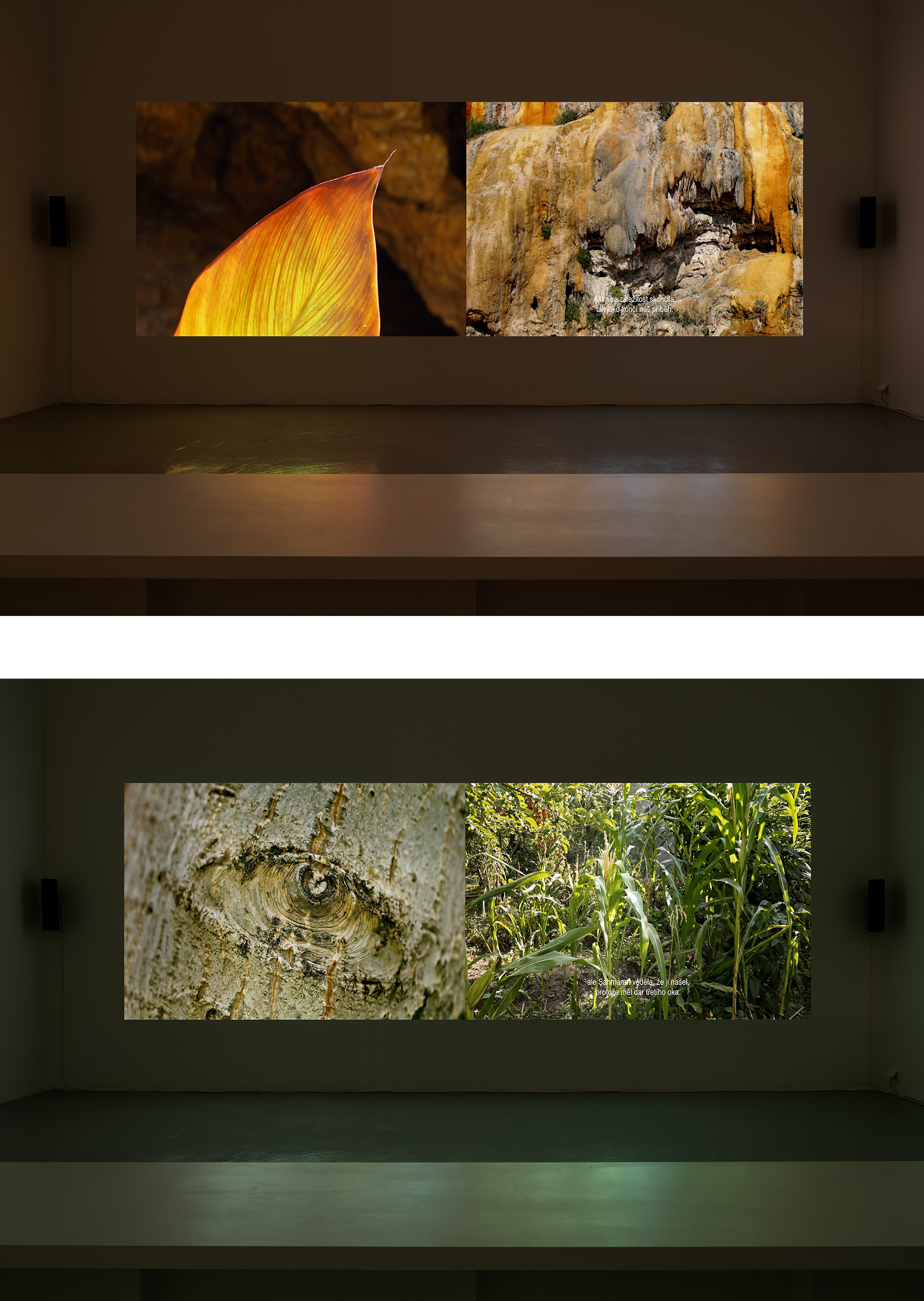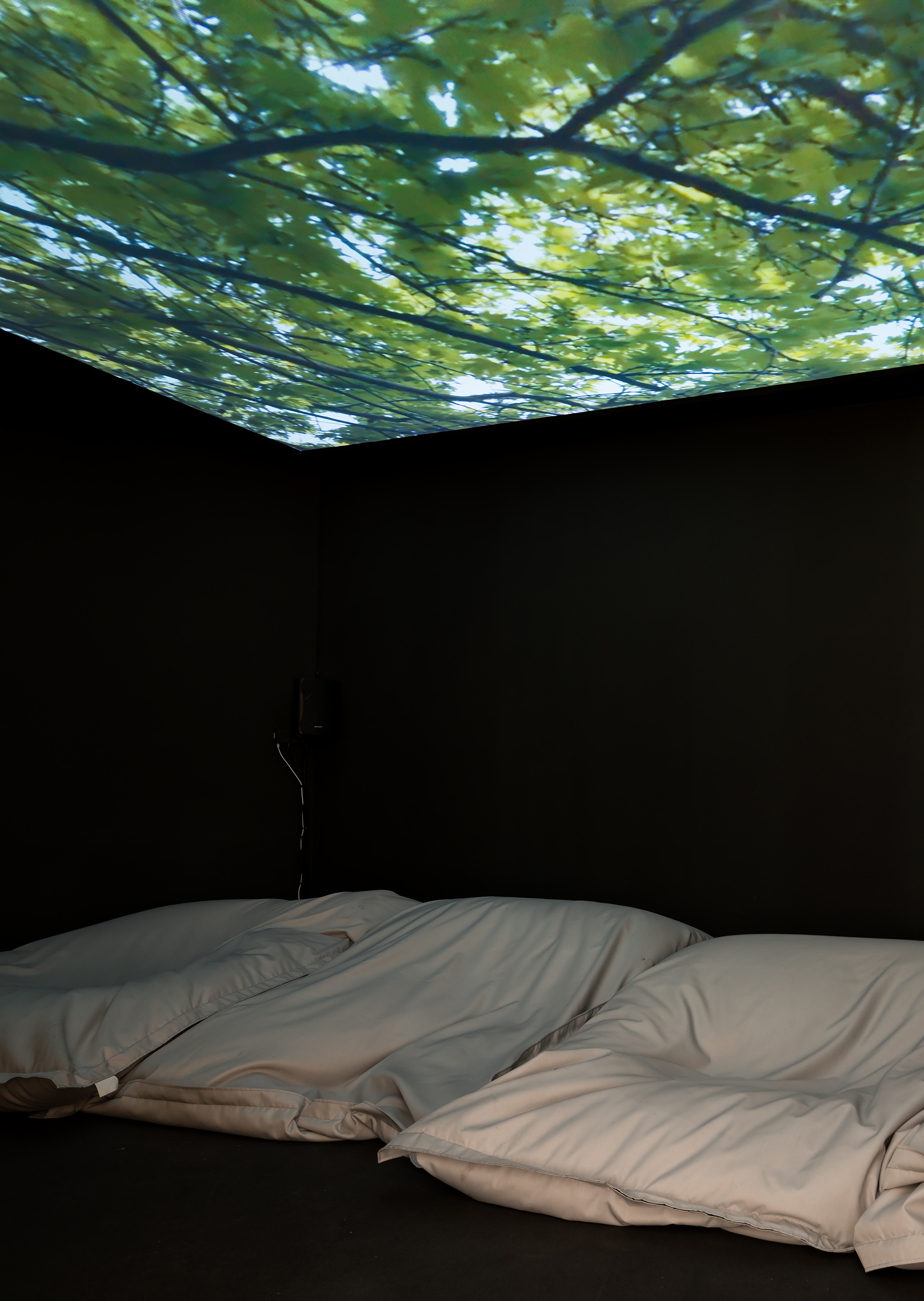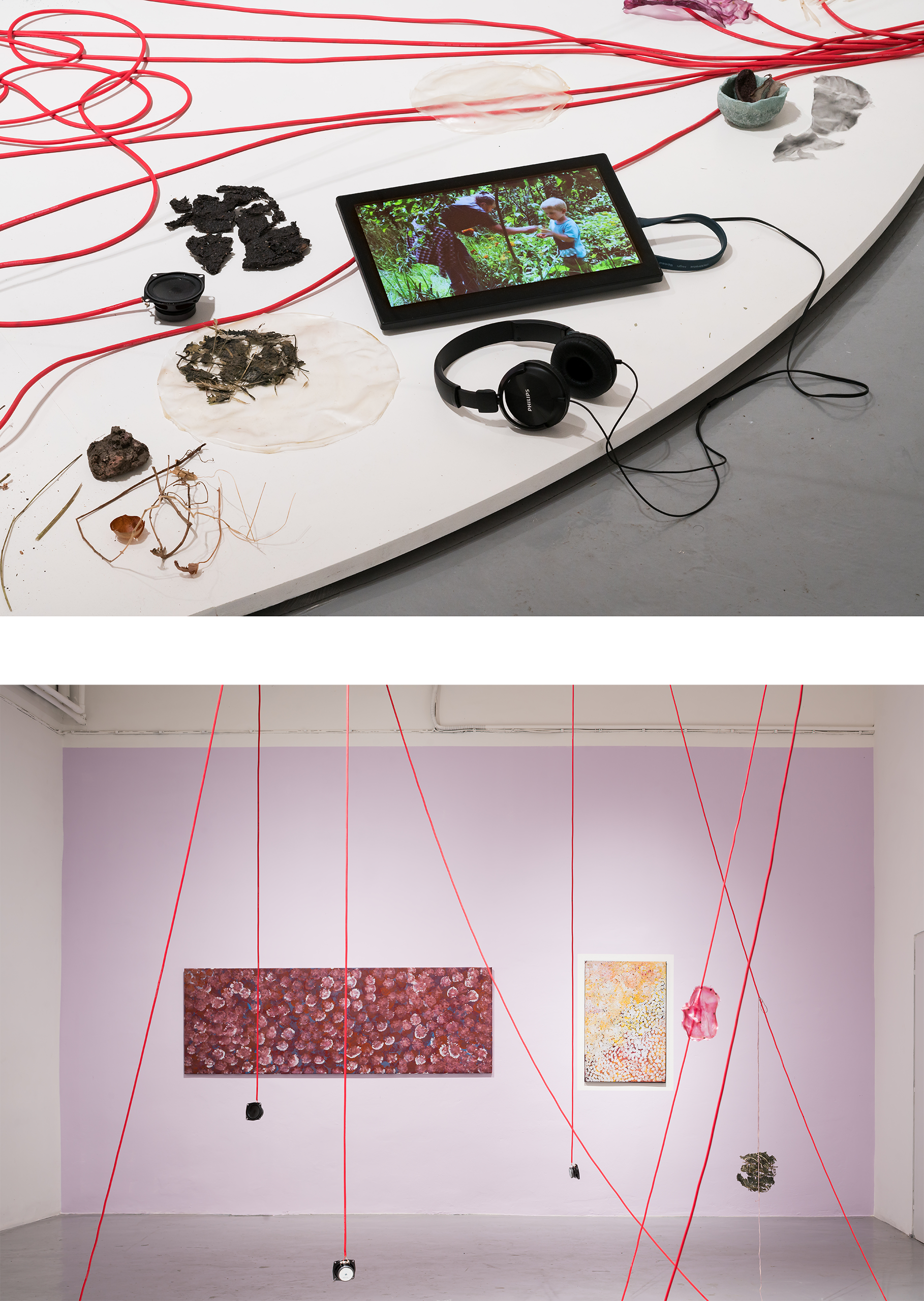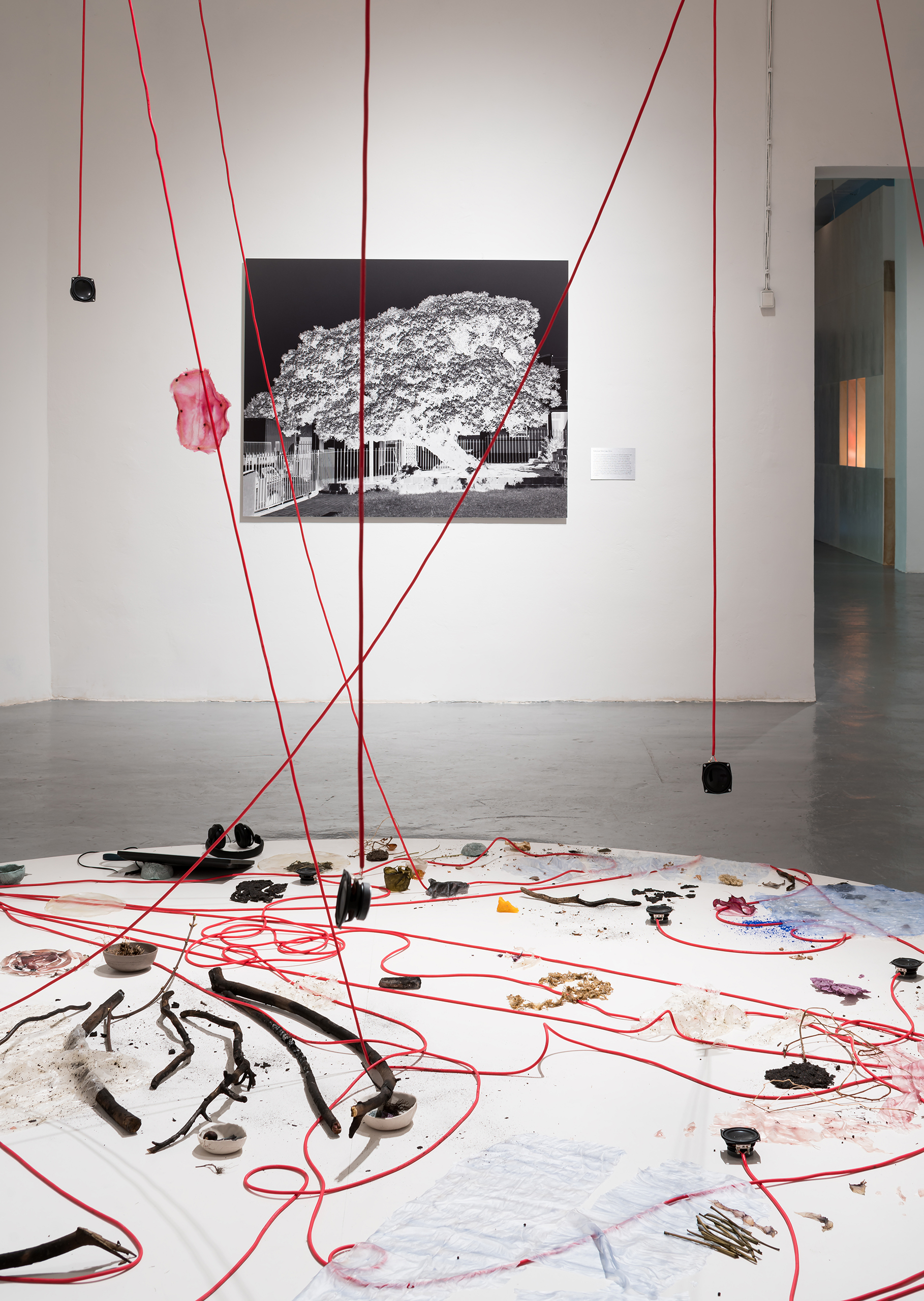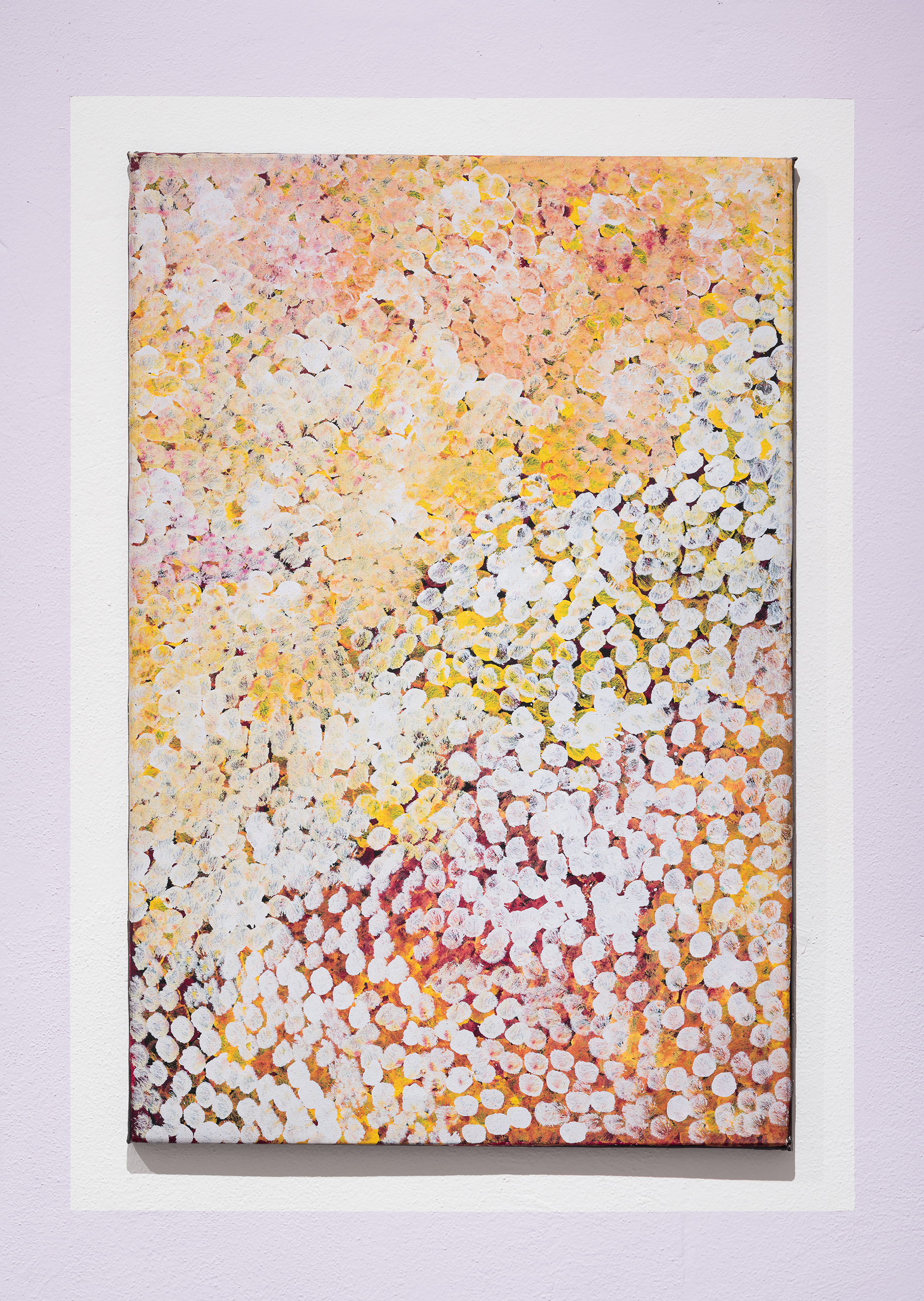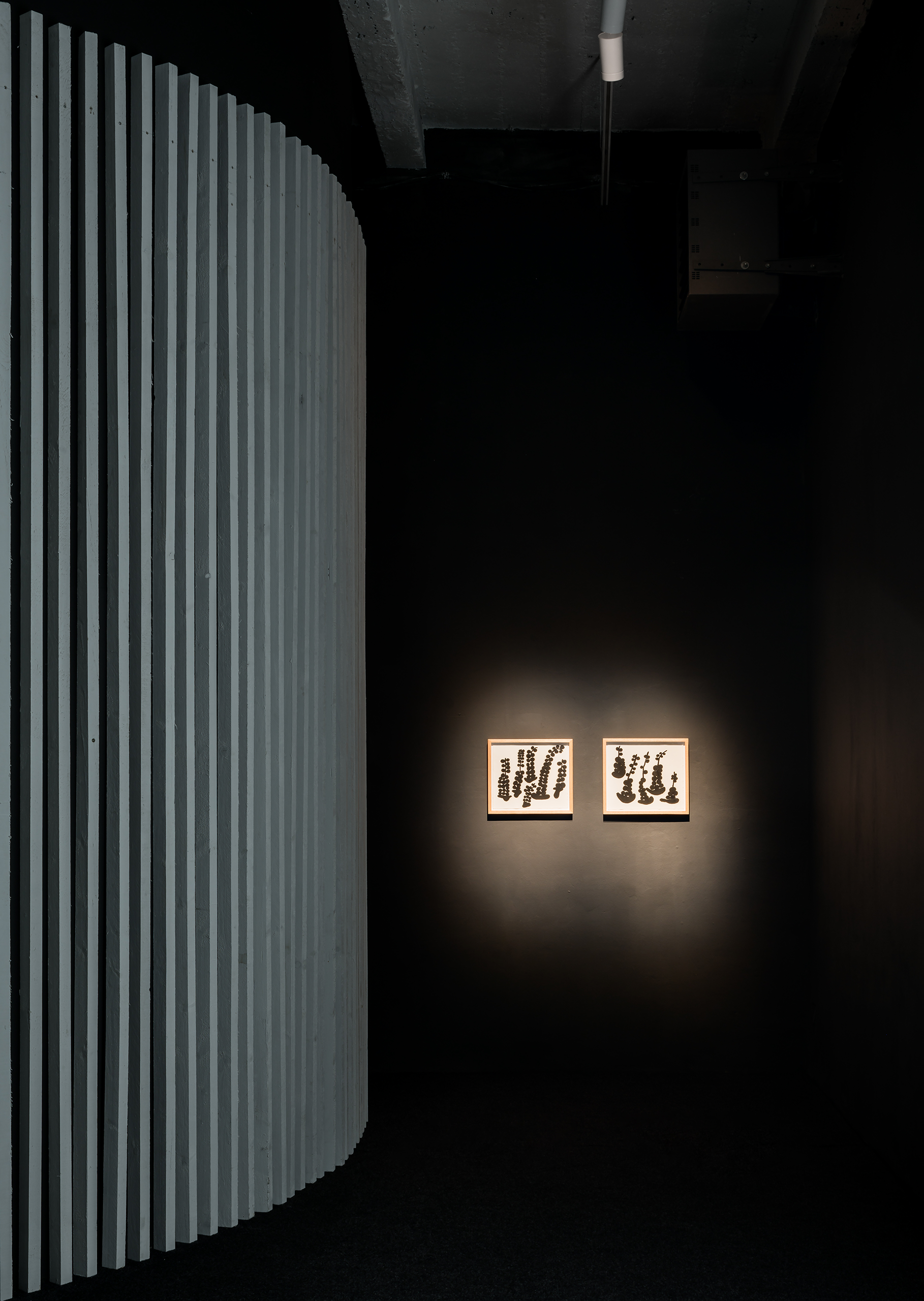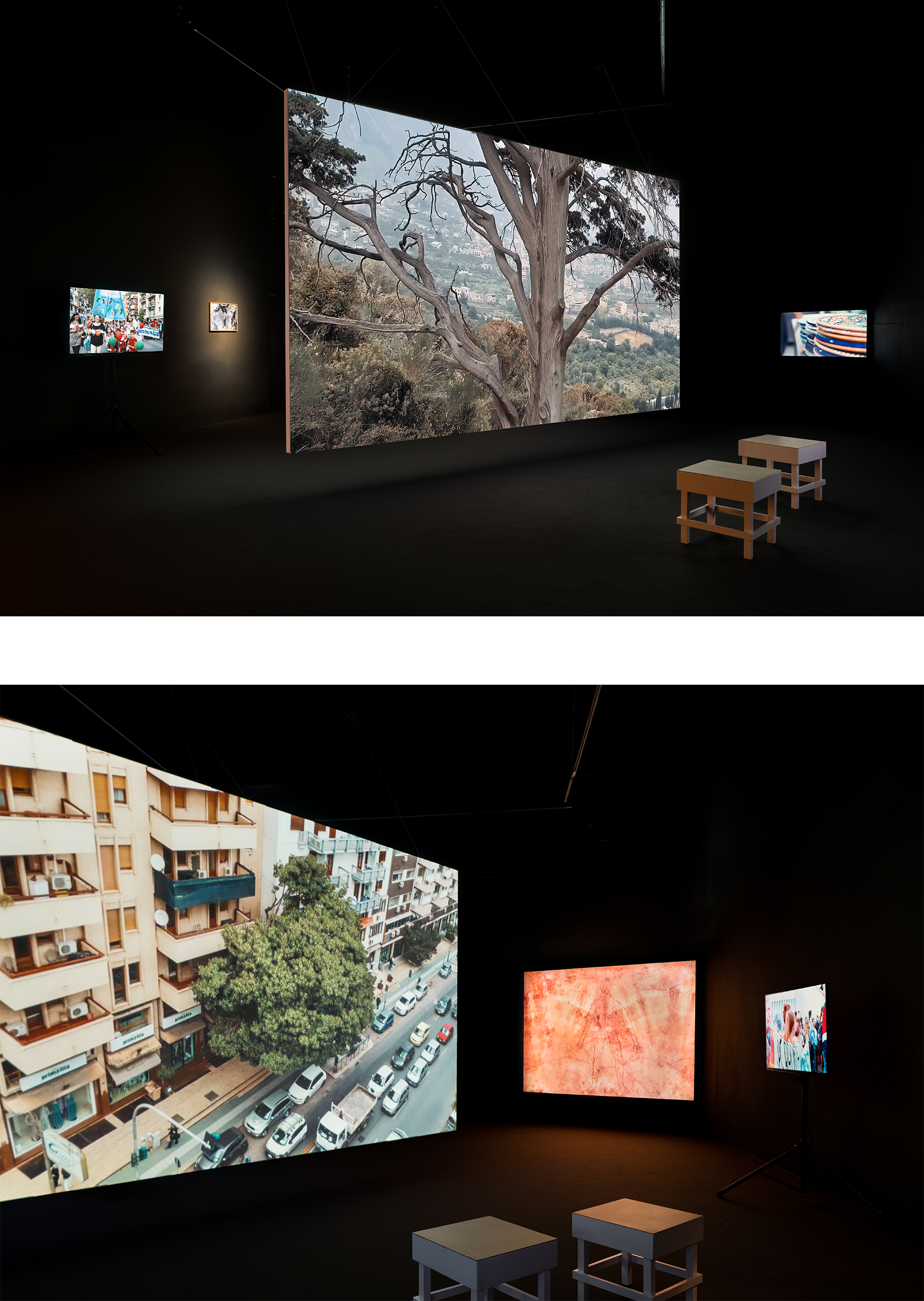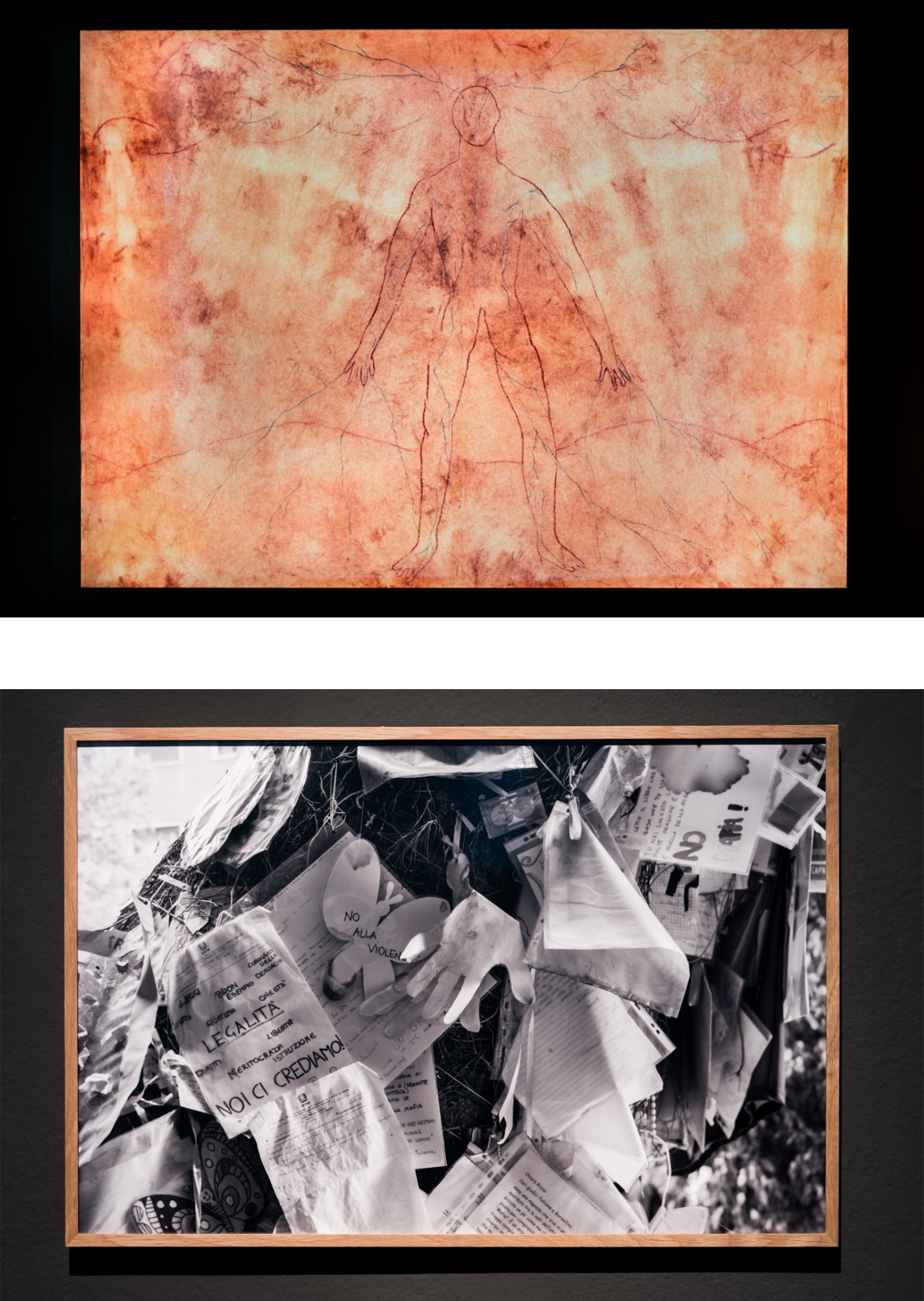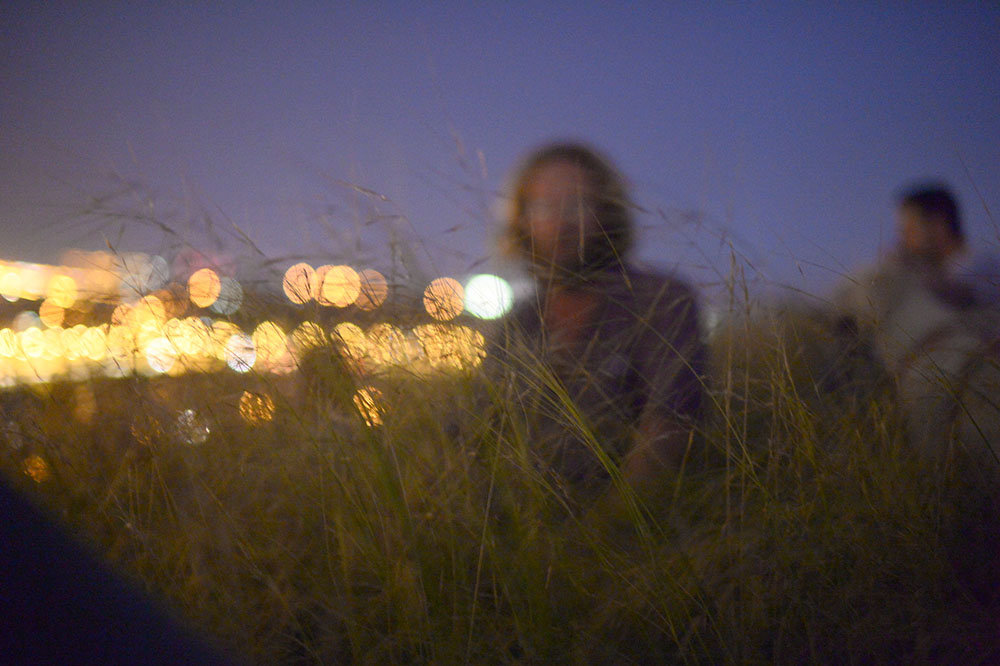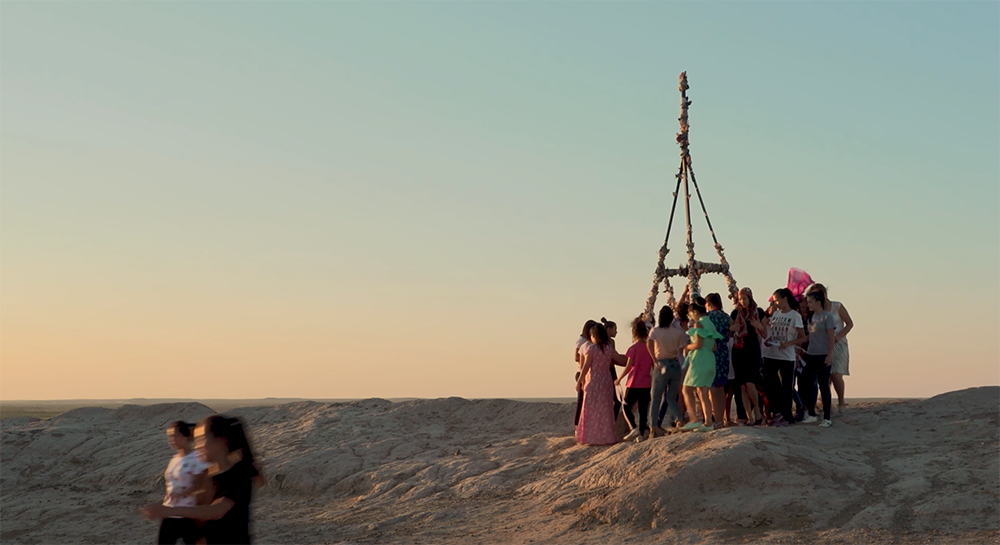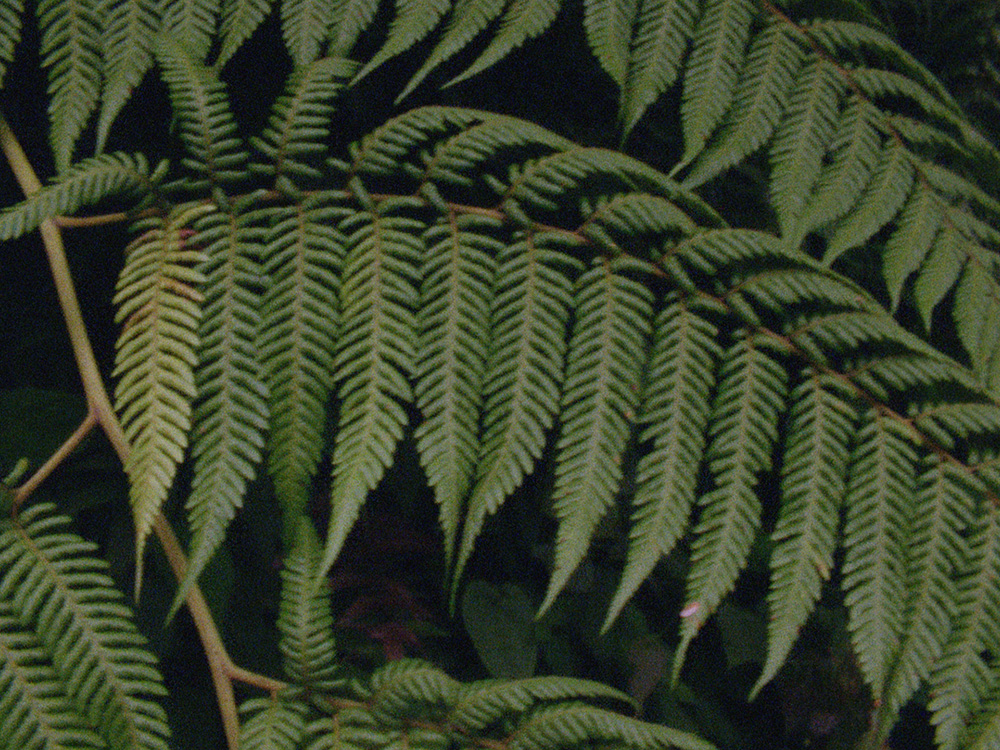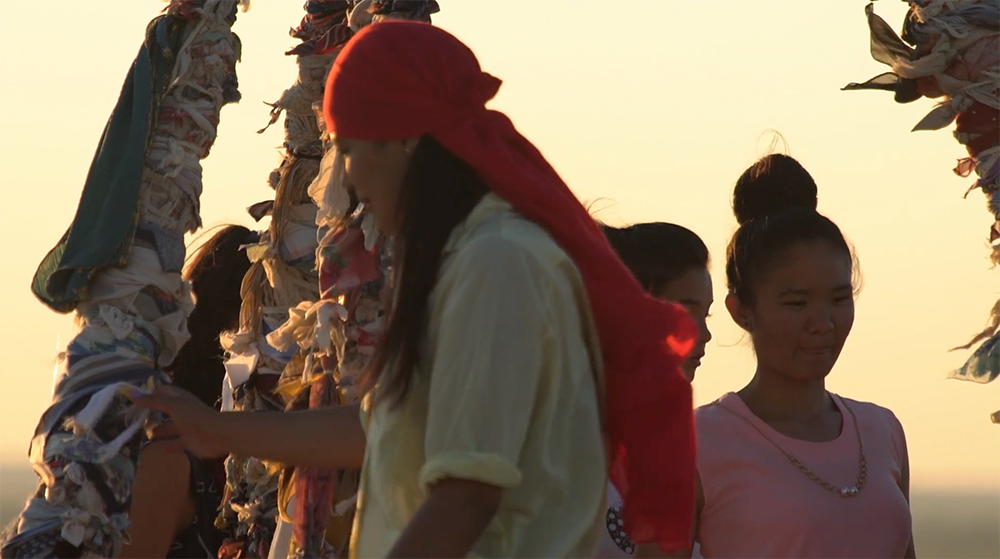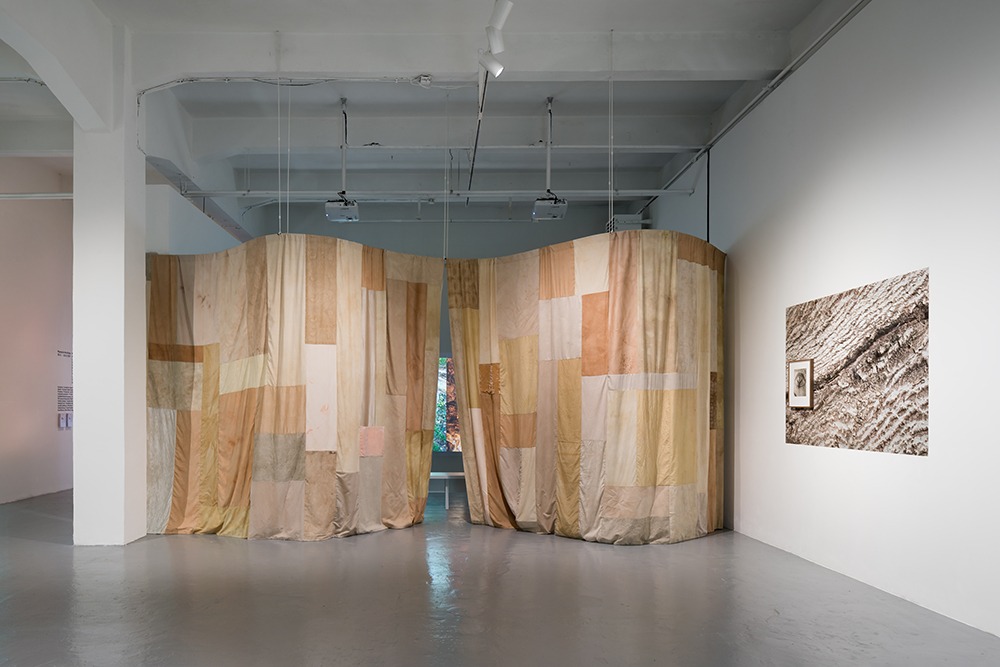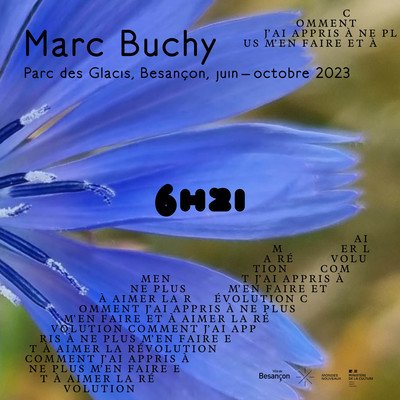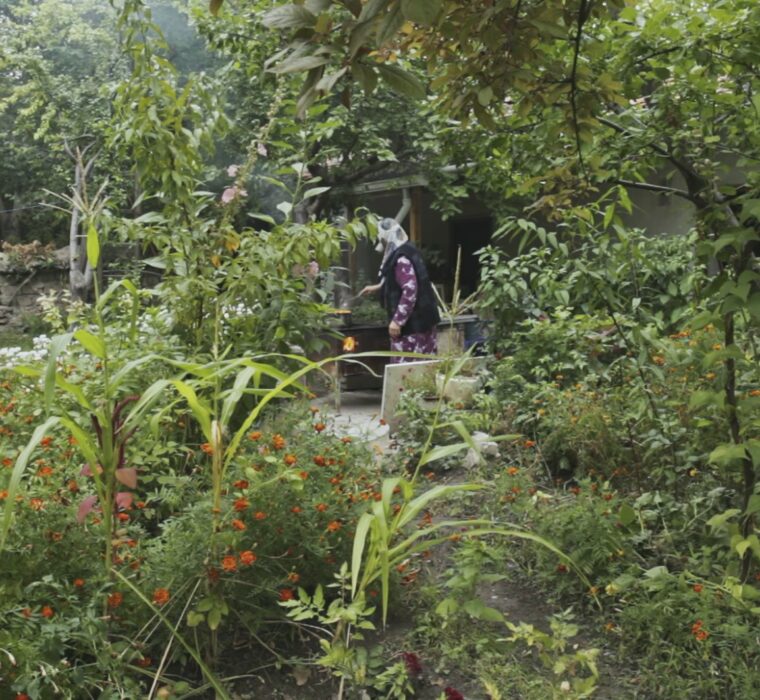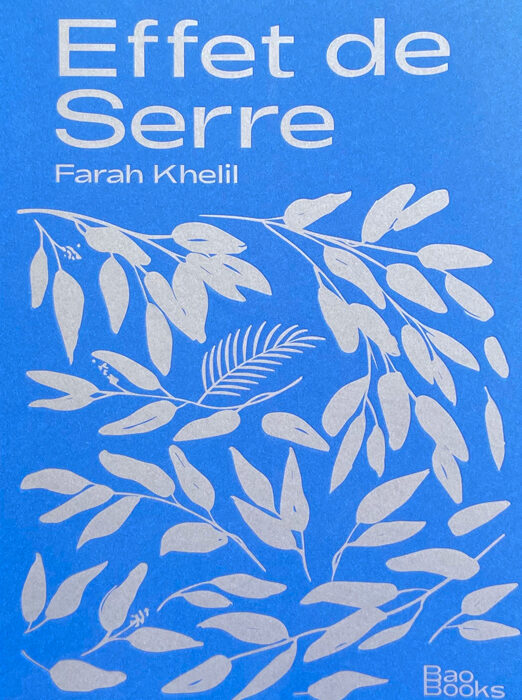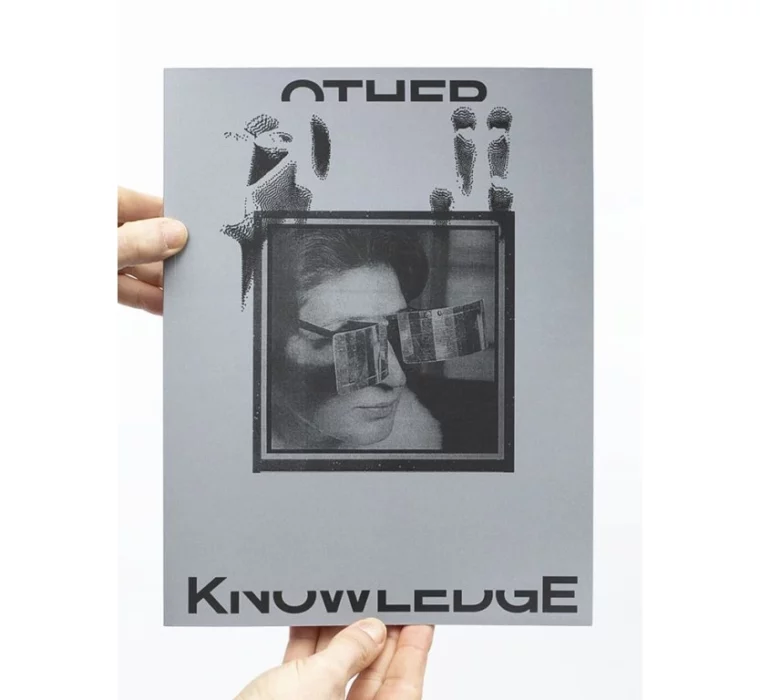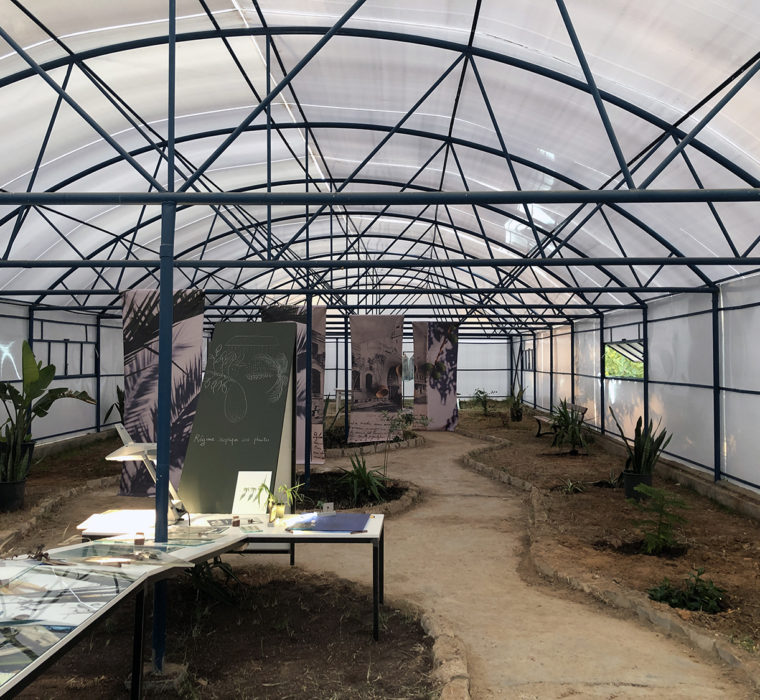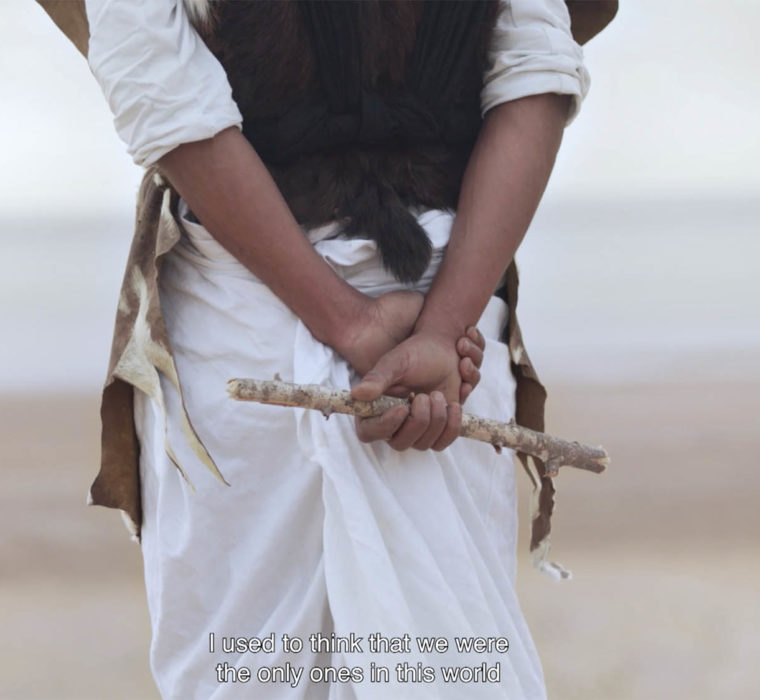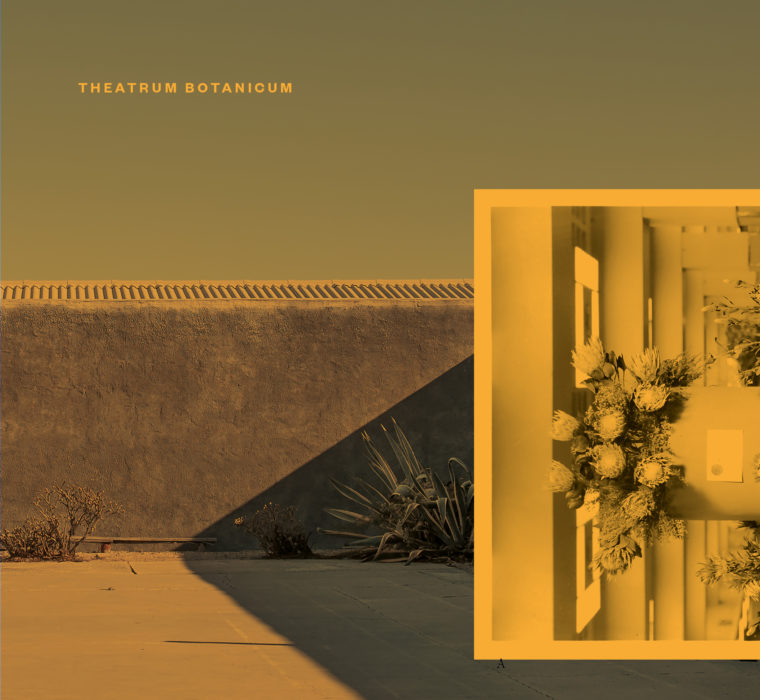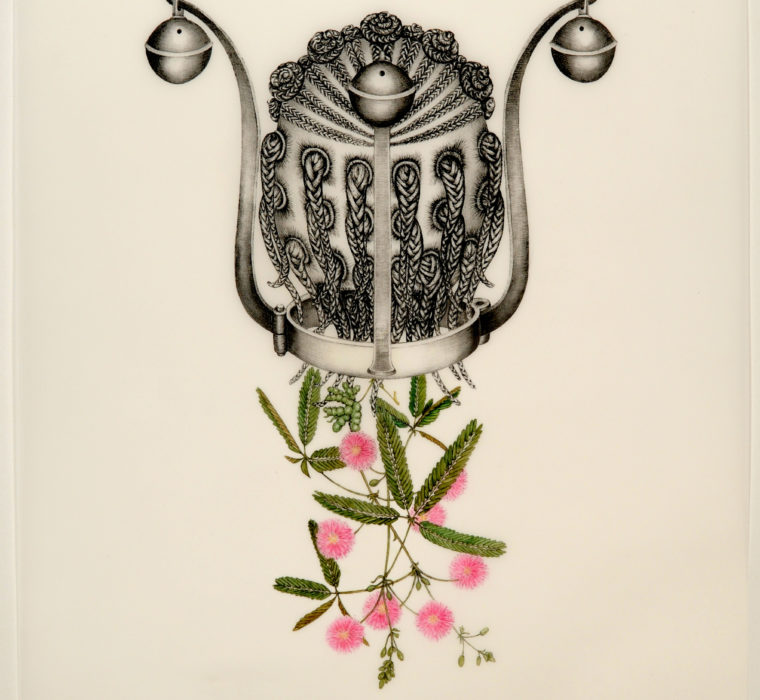Planted in the Body
Artists
Nikola Brabcová
Alexandra Cihanská Machová
Laura Huertas Millán
Suzanne Husky
Saodat Ismailova
Emily Kame Kngwarreye
Uriel Orlow
Solange Pessoa
Luiza Prado de O. Martins
Corinne Silva
Adéla Součková
Co-curated with Tereza Jindrová
Planted in the Body
Artists
Nikola Brabcová
Alexandra Cihanská Machová
Laura Huertas Millán
Suzanne Husky
Saodat Ismailova
Emily Kame Kngwarreye
Uriel Orlow
Solange Pessoa
Luiza Prado de O. Martins
Corinne Silva
Adéla Součková
Co-curated with Tereza Jindrová
The group show Planted in the Body looks at soil, plants and their products – such as oils and pigments – as sources and carriers of knowledge, and explores how their unique heritage has been transmitted through the centuries.
The works in the show recognise the agency of vegetation for its own sake, in its proper universe, away from human intervention and domination. Plants came before us and will probably survive us too. We have embedded ourselves in nature, more than the reverse. Yet, in this embedding, plants have also become crucial witnesses to human history, reflecting local, regional and global power games, and political and social divides, both in natural environments and manmade landscapes. Exploring plants and transmission places us in a liminal space where different forms of existence and knowledge interpenetrate.
The group show Planted in the Body looks at soil, plants and their products – such as oils and pigments – as sources and carriers of knowledge, and explores how their unique heritage has been transmitted through the centuries.
The works in the show recognise the agency of vegetation for its own sake, in its proper universe, away from human intervention and domination. Plants came before us and will probably survive us too. We have embedded ourselves in nature, more than the reverse. Yet, in this embedding, plants have also become crucial witnesses to human history, reflecting local, regional and global power games, and political and social divides, both in natural environments and manmade landscapes. Exploring plants and transmission places us in a liminal space where different forms of existence and knowledge interpenetrate.
The show highlights the role of matrilineal and ancestral chains in preserving and passing down to younger generations teachings from nature that touch on the realms of remedies, spirituality, ecological care, survival skills, food practices, gardening, coping mechanisms after trauma, political memories and conflicts. There are multiple dissemination processes, from verbal and nonverbal communication to tales, songs, orality, embodied practices, cooperative forms of actions, hands-on approaches and sensing the environment. Whether living in forests, plains or deserts as nomads, or being in touch with vegetation in orchards, gardens and parks, we all experience a certain link to plants. They are part of us, but their knowledge is not always considered in proportion to their value, and fluctuates with time, culture and geography. Heritage chains are vulnerable and often at risk, including the threat of disappearance and censorship. History provides many examples of the interruption of transmission chains, from rulers who regard the knowledge of healers and herbalists as sorcery, and ecosystems being threatened by anthropogenic destruction, to younger generations losing their connection to the land, its nonhuman inhabitants and their ancestors. We need to care for such links, for it is along these paths that plants certainly teach us about themselves, but mostly about ourselves.
At its core, the show endorses the notion of ‘plantcestors’, considering that the non-linear knowledge channelled through vegetation can also be internally accessed, without intermediaries, through the intimate bonds that we, as living entities, have established with the natural world, from seeds to leaves, bark, flowers and fruits. In a way, the know-how bestowed by flora is planted in our bodies, as a gift that our intuition allows us to reach. Common resources are our best teachers, and our strongest allies, in ensuring ecological balance. This explains the importance of indigenous knowledge and cosmogonies in learning how to receive messages from the vegetal, animal, mineral, spiritual and ancestral worlds, and to live in harmony with them, even if these voices have been lost, discriminated against or otherwise silenced through imperial, colonial and capitalist domination. In this respect, many of the works featured in the show adopt ethnobotanical ethics and envision regenerative practices for landscapes, soils and bodies, thereby reconnecting us to our common inheritance.
Permeating the works are notions of fertility and seasonal cycles that connect us to abundance and decay – present in all of us – and lead us to question our own relationship to transmission patterns. If plants are vessels, then we should act as recipients of their heritage and learn how to integrate and embody it. Plants enable us to decolonise our ways of learning, preserving and passing down. The works included in Planted in the Body address all these issues, looking both into our common kinship and into the future. Listening to botanical knowledge invites us to embrace responsible ways of acting, being and resisting that are relevant to our contaminated and deregulated times.
The show highlights the role of matrilineal and ancestral chains in preserving and passing down to younger generations teachings from nature that touch on the realms of remedies, spirituality, ecological care, survival skills, food practices, gardening, coping mechanisms after trauma, political memories and conflicts. There are multiple dissemination processes, from verbal and nonverbal communication to tales, songs, orality, embodied practices, cooperative forms of actions, hands-on approaches and sensing the environment. Whether living in forests, plains or deserts as nomads, or being in touch with vegetation in orchards, gardens and parks, we all experience a certain link to plants. They are part of us, but their knowledge is not always considered in proportion to their value, and fluctuates with time, culture and geography. Heritage chains are vulnerable and often at risk, including the threat of disappearance and censorship. History provides many examples of the interruption of transmission chains, from rulers who regard the knowledge of healers and herbalists as sorcery, and ecosystems being threatened by anthropogenic destruction, to younger generations losing their connection to the land, its nonhuman inhabitants and their ancestors. We need to care for such links, for it is along these paths that plants certainly teach us about themselves, but mostly about ourselves.
At its core, the show endorses the notion of ‘plantcestors’, considering that the non-linear knowledge channelled through vegetation can also be internally accessed, without intermediaries, through the intimate bonds that we, as living entities, have established with the natural world, from seeds to leaves, bark, flowers and fruits. In a way, the know-how bestowed by flora is planted in our bodies, as a gift that our intuition allows us to reach. Common resources are our best teachers, and our strongest allies, in ensuring ecological balance. This explains the importance of indigenous knowledge and cosmogonies in learning how to receive messages from the vegetal, animal, mineral, spiritual and ancestral worlds, and to live in harmony with them, even if these voices have been lost, discriminated against or otherwise silenced through imperial, colonial and capitalist domination. In this respect, many of the works featured in the show adopt ethnobotanical ethics and envision regenerative practices for landscapes, soils and bodies, thereby reconnecting us to our common inheritance.
Permeating the works are notions of fertility and seasonal cycles that connect us to abundance and decay – present in all of us – and lead us to question our own relationship to transmission patterns. If plants are vessels, then we should act as recipients of their heritage and learn how to integrate and embody it. Plants enable us to decolonise our ways of learning, preserving and passing down. The works included in Planted in the Body address all these issues, looking both into our common kinship and into the future. Listening to botanical knowledge invites us to embrace responsible ways of acting, being and resisting that are relevant to our contaminated and deregulated times.
The show is marked by the strong architectural motif of a circle connecting all parts of the space and symbolically representing a tree trunk, which the visitor can enter. All the artworks, in their diversity of media, techniques and styles, resonate together on many, sometimes unexpected, levels, which were revealed during the installation process. The predominant use of raw, non-polluting vegetal matter runs through several pieces, and in others a link emerges between the figure of the grandmother, or female ancestor, and her (great) grandchildren. The evidence of the power infused by plants in our daily lives jumps out at us – curators, artists and viewers. We found that in their materiality and form, and in their content, the new commissions – subconsciously, through our curatorial frame – became symbiotic fellows of the existing works. The different generations of artists enter into dialogue, and, despite coming from varied cultural contexts, manifest how the knowledge of plants transits through our bodies and our senses, without intermediaries, and stress how interconnected our human existence is with that of natural entities. Absorbing such knowledge, in the form of embodied practice, opens us up to grasping the cyclical, perishable and regenerative aspect of all things. Again, we are within nature and nature is within us.
The show is marked by the strong architectural motif of a circle connecting all parts of the space and symbolically representing a tree trunk, which the visitor can enter. All the artworks, in their diversity of media, techniques and styles, resonate together on many, sometimes unexpected, levels, which were revealed during the installation process. The predominant use of raw, non-polluting vegetal matter runs through several pieces, and in others a link emerges between the figure of the grandmother, or female ancestor, and her (great) grandchildren. The evidence of the power infused by plants in our daily lives jumps out at us – curators, artists and viewers. We found that in their materiality and form, and in their content, the new commissions – subconsciously, through our curatorial frame – became symbiotic fellows of the existing works. The different generations of artists enter into dialogue, and, despite coming from varied cultural contexts, manifest how the knowledge of plants transits through our bodies and our senses, without intermediaries, and stress how interconnected our human existence is with that of natural entities. Absorbing such knowledge, in the form of embodied practice, opens us up to grasping the cyclical, perishable and regenerative aspect of all things. Again, we are within nature and nature is within us.
Works excerpts
from Laura Huertas Millán, JÍIBIE, 2019
from Nikola Brabcová, Jara (2021)
from Corinne Silva, Flames Among Stones (2019)
Works excerpts
from Laura Huertas Millán, JÍIBIE, 2019
from Nikola Brabcová, Jara (2021)
from Corinne Silva, Flames Among Stones (2019)
Sound Excerpts
from Luiza Prado de O. Martins, Notes to the Seers, 2021-ongoing
Artemisia
Arruda
Sound Excerpts
from Luiza Prado de O. Martins, Notes to the Seers, 2021-ongoing
Artemisia
Arruda
Public program
On August 12, MeetFactory hosted a special summer public program, Soirée. Spread around the gallery and the artists’ studios, it revolved around the plant kingdom in echo to the exhibition Planted in the Body and it included a tour of the show, an extension of it through the screening of the films Chillpiq (2017) by Saodat Ismailova and Word for Forest (2018) by Pia Rönicke. Furthermore, Soirée hosted an artist talk with artist Corinne Silva that explored cultivation as a strategy of resistance and contemplated the matrilineal relationships and possibilities of cultivating the knowledge that a country offers. The event culminated with a sound performance by Alexandra Cihanská Machová and Steppe, a night walk with botanist Jan Albert Šturma for the smells and structures of thermophilic lawns above Zlíchov.
Photo by Word for Forest, Pia Rönicke
Chillpiq, Saodat Ismailova
Public program
On August 12, MeetFactory hosted a special summer public program, Soirée. Spread around the gallery and the artists’ studios, it revolved around the plant kingdom in echo to the exhibition Planted in the Body and it included a tour of the show, an extension of it through the screening of the films Chillpiq (2017) by Saodat Ismailova and Word for Forest (2018) by Pia Rönicke. Furthermore, Soirée hosted an artist talk with artist Corinne Silva that explored cultivation as a strategy of resistance and contemplated the matrilineal relationships and possibilities of cultivating the knowledge that a country offers. The event culminated with a sound performance by Alexandra Cihanská Machová and Steppe, a night walk with botanist Jan Albert Šturma for the smells and structures of thermophilic lawns above Zlíchov.
Talk
Coming soon…
Talk
Coming soon…
Podcasts

Suzanne Husky Podcast: Czech version of Les contes de ma mère l’oie, 2021
Clelia Coussonnet & Tereza Jindrová: What can plants teach us? in Tovární hlášení, the podcast of MeetFactory
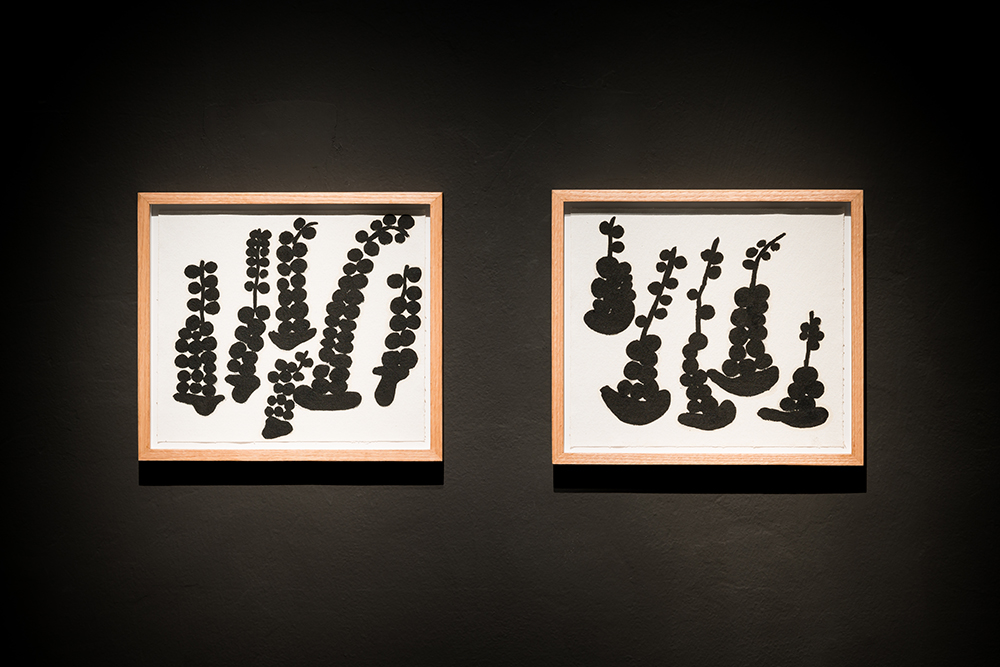
Podcasts
Suzanne Husky Podcast: Czech version of Les contes de ma mère l’oie, 2021

Clelia Coussonnet & Tereza Jindrová: What can plants teach us? in Tovární hlášení, the podcast of MeetFactory

MeetFactory, Prague, Czech Republic
June 29 – August 22, 2021
The exhibition received support from the peoples of Iceland, Liechtenstein and Norway through the EEA Grants, and from the Czech Centres in Berlin and in Paris, the Embassy of Australia to Czech Republic, the Institut Français de République Tchèque, the Swiss Arts Council Pro Helvetia, and the Swiss Embassy in Prague.
MeetFactory, Prague, Czech Republic
June 29 – August 22, 2021
The exhibition received support from the peoples of Iceland, Liechtenstein and Norway through the EEA Grants, and from the Czech Centres in Berlin and in Paris, the Embassy of Australia to Czech Republic, the Institut Français de République Tchèque, the Swiss Arts Council Pro Helvetia, and the Swiss Embassy in Prague.

